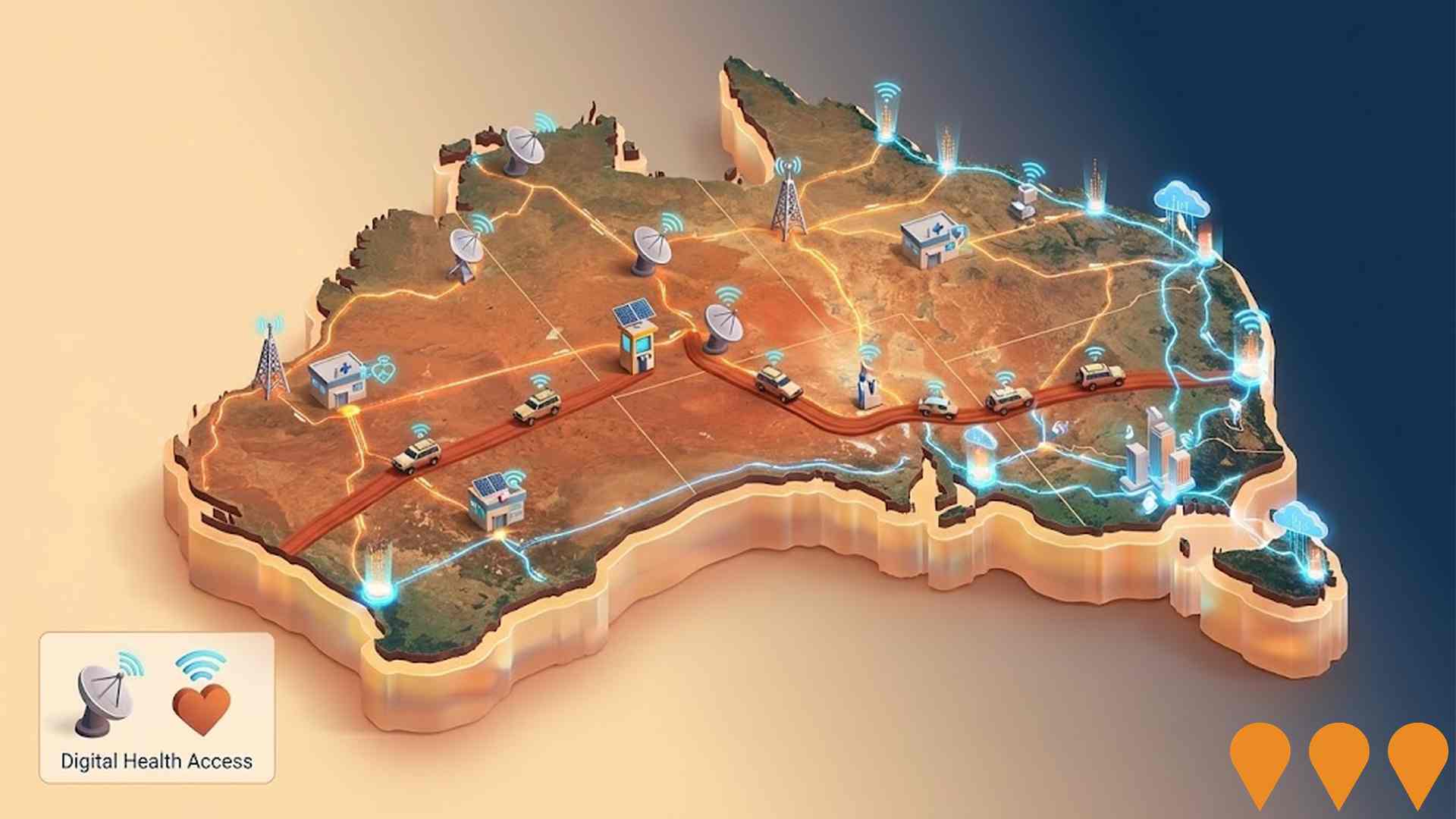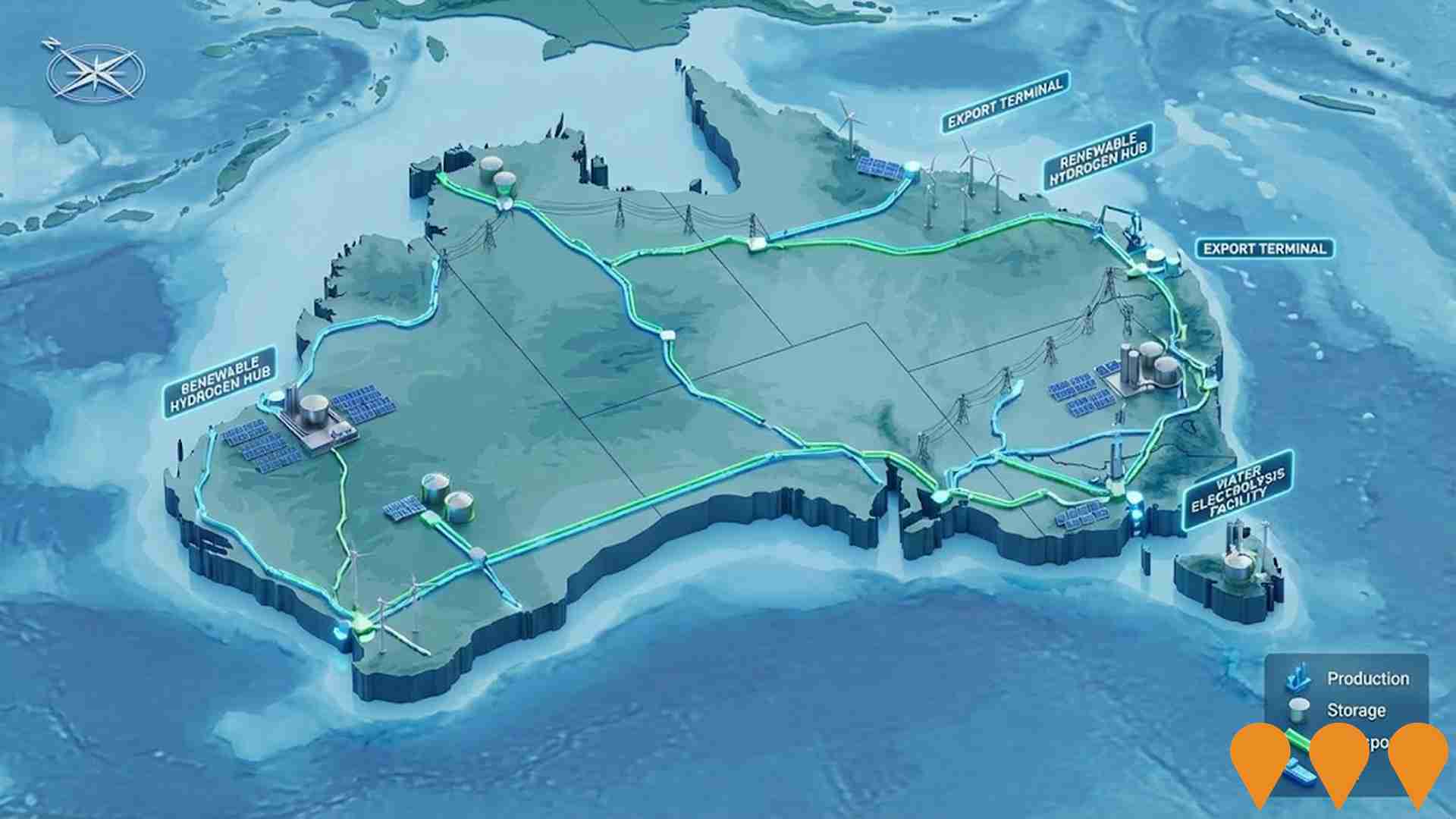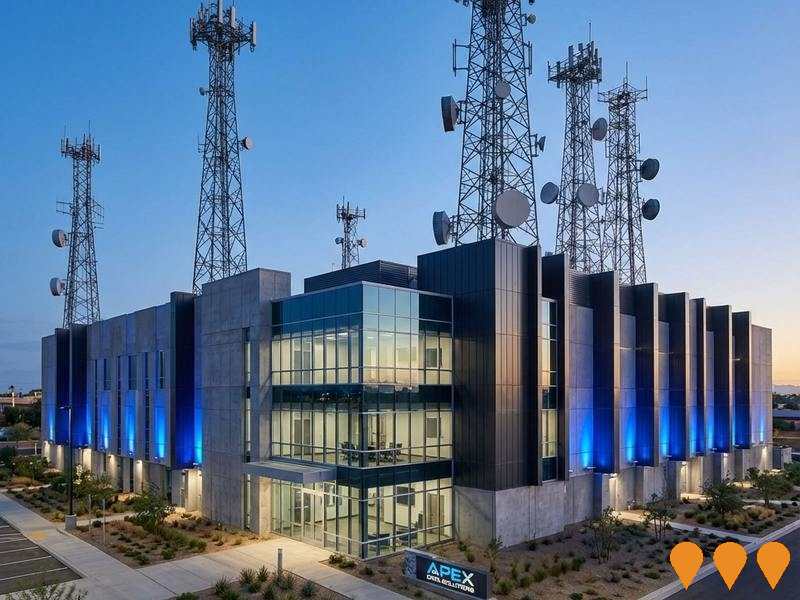Chart Color Schemes
est. as @ -- *
ABS ERP | -- people | --
2021 Census | -- people
Sales Activity
Curious about local property values? Filter the chart to assess the volume and appreciation (including resales) trends and regional comparisons, or scroll to the map below view this information at an individual property level.
Find a Recent Sale
Sales Detail
Population
An assessment of population growth drivers in Ceduna reveals an overall ranking slightly below national averages considering recent, and medium term trends
As of Aug 2025, Ceduna's population is approximately 2,863, showing a rise of 166 people (6.2%) since the 2021 Census which reported 2,697 residents. This increase is inferred from the estimated resident population of 2,865 in June 2024 and an additional validated new address since the Census date. The population density is around 6.9 persons per square kilometer. Ceduna's growth rate of 6.2% since 2021 surpassed both the SA4 region (4.8%) and the SA3 area, indicating it as a growth leader in the region. Natural growth contributed approximately 57.1% to overall population gains recently. AreaSearch uses ABS/Geoscience Australia projections for each SA2 area, released in 2024 with a base year of 2022.
For areas not covered and years post-2032, the SA State Government's Regional/LGA projections by age category are adopted, based on 2021 data and released in 2023, with adjustments made using weighted aggregation methods from LGA to SA2 levels. Future population trends suggest an increase just below the national regional median, with an expected expansion of 206 persons to reach 3,079 by 2041, representing a total increase of 7.3% over 17 years.
Frequently Asked Questions - Population
Development
AreaSearch analysis of residential development drivers sees Ceduna recording a relatively average level of approval activity when compared to local markets analysed countrywide
Ceduna has recorded approximately seven residential properties granted approval annually. Over the past five financial years, from FY21 to FY25, around 35 homes were approved, with two more approved so far in FY26. On average, over these five years, about 3.5 new residents arrived per dwelling constructed.
This suggests that supply is lagging behind demand, potentially leading to heightened buyer competition and pricing pressures. The average value of new dwellings developed during this period was $413,000. In terms of commercial development, $5.8 million in approvals have been registered in the current financial year, indicating limited focus on commercial projects compared to residential ones. Compared to the rest of South Australia, Ceduna has about three-quarters the rate of new dwelling approvals per person.
Nationally, it ranks around the 55th percentile for areas assessed, although development activity has picked up recently. This lower level of development reflects market maturity and possible constraints. Recent development in Ceduna has been entirely standalone homes, maintaining its traditional low density character with a focus on family homes appealing to those seeking space. The estimated population per dwelling approval is 446 people, indicating a quiet, low activity development environment. Future projections show Ceduna adding approximately 208 residents by 2041. Current development levels appear aligned with future requirements, suggesting stable market conditions without significant price pressures.
Frequently Asked Questions - Development
Infrastructure
Ceduna has moderate levels of nearby infrastructure activity, ranking in the top 50% nationally
No changes can significantly affect a region's performance like modifications to nearby infrastructure, large-scale projects, or planning ventures. As per AreaSearch, zero projects have been pinpointed that could potentially impact this area. Notable projects encompass South Australian Road Network Maintenance, South Australia High Productivity Vehicle Network Access, Gawler Craton Rail Access, and Bulk Water Supply Security, with the following list outlining those expected to be most pertinent.
Professional plan users can use the search below to filter and access additional projects.
INFRASTRUCTURE SEARCH
 Denotes AI-based impression for illustrative purposes only, not to be taken as definitive under any circumstances. Please follow links and conduct other investigations from the project's source for actual imagery. Developers and project owners wishing us to use original imagery please Contact Us and we will do so.
Denotes AI-based impression for illustrative purposes only, not to be taken as definitive under any circumstances. Please follow links and conduct other investigations from the project's source for actual imagery. Developers and project owners wishing us to use original imagery please Contact Us and we will do so.
Frequently Asked Questions - Infrastructure
Enabling Digital Health Services for Regional and Remote Australia
National initiative to expand and improve digital health access for people in regional and remote Australia. Focus areas include enabling telehealth and virtual care, upgrading clinical systems and connectivity, supporting secure information exchange, and building workforce capability in digital health, aligned with the Australian Government's Digital Health Blueprint and Action Plan 2023-2033.

Enabling Infrastructure for Hydrogen Production
Australia has completed the National Hydrogen Infrastructure Assessment (NHIA) to 2050 and refreshed its National Hydrogen Strategy (2024). The programmatic focus has shifted to planning and enabling infrastructure through measures such as ARENA's Hydrogen Headstart and the Hydrogen Production Tax Incentive (from April 2025). Round 2 of Hydrogen Headstart consultation occurred in 2025. Collectively these actions aim to coordinate investment in transport, storage, water and electricity inputs linked to Renewable Energy Zones and priority hubs, supporting large-scale renewable hydrogen production and future export supply chains.

Bulk Water Supply Security
Nationwide program led by the National Water Grid Authority to improve bulk water security and reliability for non-potable and productive uses. Activities include strategic planning, science and business cases, and funding of state and territory projects such as storages, pipelines, dam upgrades, recycled water and efficiency upgrades to build drought resilience and support regional communities, industry and the environment.

National EV Charging Network (Highway Fast Charging)
Partnership between the Australian Government and NRMA to deliver a backbone EV fast charging network on national highways. Program funds and co-funds 117 DC fast charging sites at roughly 150 km intervals to connect all capital cities and regional routes, reducing range anxiety and supporting EV uptake.

Network Optimisation Program - Roads
A national program concept focused on improving congestion and reliability on urban road networks by using low-cost operational measures and technology (e.g., signal timing, intersection treatments, incident management) to optimise existing capacity across major city corridors.

South Australian Road Network Maintenance
An initiative to address the growing backlog in maintenance on South Australia's roads, aiming to enhance safety, reduce costs for users, and ensure road network resilience through strategic investment.

South Australia High Productivity Vehicle Network Access
Expanding South Australia's road freight network for larger High Productivity Vehicles to enhance safety, reduce transport costs, and improve economic productivity through infrastructure upgrades like improved road geometry and bridge capacities.

Gawler Craton Rail Access
The proposal is for a third party to build, own, and operate a 350 km railway in the Gawler Craton province, linking to the existing interstate rail network. It aims to provide significant transport connections to mines such as Prominent Hill, Olympic Dam, and Carrapateena, and open up other potential reserves including Wirrda Well, Acropolis, Vulcan, Titan, and Millers Creek. The project could facilitate exploration and development in the remote mineral region, which contains extensive copper, gold, silver, and iron ore deposits.

Employment
AreaSearch analysis reveals Ceduna recording weaker employment conditions than most comparable areas nationwide
Ceduna's workforce is balanced across white and blue-collar jobs, with prominent essential services sectors. The unemployment rate was 7.7% in the past year, with an estimated employment growth of 4.8%.
As of June 2025, 1,366 residents are employed, with an unemployment rate of 3.1%, higher than Rest of SA's 4.6%. Workforce participation is 58.9%, slightly above Rest of SA's 54.1%. Key employment sectors include health care & social assistance, education & training, and public administration & safety. Education & training has a strong presence, with an employment share 1.6 times the regional level.
Conversely, agriculture, forestry & fishing shows lower representation at 6.5% compared to the regional average of 14.5%. Many residents may commute elsewhere for work based on Census data. In the year ending June 2025, employment increased by 4.8%, while labour force grew by 5.8%, leading to a 0.9 percentage point rise in unemployment. This contrasts with Rest of SA's employment contraction of 1.2% and unemployment increase of 1.2 percentage points. Jobs and Skills Australia forecasts national employment growth of 6.6% over five years and 13.7% over ten years, but industry-specific projections vary significantly. Applying these projections to Ceduna's employment mix suggests local growth of approximately 6.1% over five years and 13.1% over ten years.
Frequently Asked Questions - Employment
Income
Income levels sit below national averages according to AreaSearch assessment
AreaSearch's latest postcode level ATO data for financial year 2022 shows Ceduna's median income among taxpayers is $52,062, with an average of $61,399. These figures are below the national average. In comparison, Rest of SA has a median income of $46,889 and an average of $56,582. Based on Wage Price Index growth of 12.83% since financial year 2022, current estimates for Ceduna's median income are approximately $58,742 and the average is $69,276 as of September 2025. According to Census 2021 income data, personal income ranks at the 47th percentile ($788 weekly), while household income sits at the 29th percentile. In terms of income distribution, 29.1% of Ceduna's population (833 individuals) fall within the $1,500 - 2,999 income range, which is similar to the pattern seen at regional levels where 27.5% occupy this range. Housing costs are manageable with 88.0% retained, but disposable income sits below average at the 35th percentile.
Frequently Asked Questions - Income
Housing
Ceduna is characterized by a predominantly suburban housing profile, with a higher proportion of rental properties than the broader region
Ceduna's dwelling structures, as per the latest Census, consisted of 90.9% houses and 9.1% other dwellings (semi-detached, apartments, 'other' dwellings), compared to Non-Metro SA's 75.9% houses and 24.1% other dwellings. Home ownership in Ceduna was at 31.7%, with mortgaged dwellings at 27.5% and rented dwellings at 40.9%. The median monthly mortgage repayment was $1,251, higher than Non-Metro SA's average of $1,170. The median weekly rent in Ceduna was $220, compared to Non-Metro SA's $195. Nationally, Ceduna's mortgage repayments were lower at $1,251 versus Australia's average of $1,863, and rents were substantially lower at $220 compared to the national figure of $375.
Frequently Asked Questions - Housing
Household Composition
Ceduna features high concentrations of lone person households, with a higher-than-average median household size
Family households account for 67.0% of all households, including 25.6% couples with children, 27.8% couples without children, and 11.9% single parent families. Non-family households make up the remaining 33.0%, consisting of 30.1% lone person households and 3.1% group households of the total. The median household size is 2.4 people, which is larger than the Rest of SA average of 2.3 people.
Frequently Asked Questions - Households
Local Schools & Education
Ceduna faces educational challenges, with performance metrics placing it in the bottom quartile of areas assessed nationally
The area's university qualification rate is 14.5%, significantly lower than Australia's average of 30.4%. This presents both challenges and opportunities for targeted educational initiatives. Bachelor degrees are the most common at 10.6%, followed by postgraduate qualifications (2.1%) and graduate diplomas (1.8%). Vocational credentials are prominent, with 38.6% of residents aged 15+ holding them - advanced diplomas at 9.8% and certificates at 28.8%.
Educational participation is high, with 28.1% of residents currently enrolled in formal education. This includes 13.0% in primary education, 6.9% in secondary education, and 3.2% pursuing tertiary education. The area has two schools serving 610 students: Crossways Lutheran School Ceduna and Ceduna Area School. Both offer integrated K-12 education, providing continuity throughout students' academic journey. School capacity exceeds typical residential needs (21.3 places per 100 residents vs 15.8 regionally), indicating the area serves as an educational center for the broader region.
Frequently Asked Questions - Education
Schools Detail
Nearby Services & Amenities
Transport
No public transport data available for this catchment area.
Frequently Asked Questions - Transport
Transport Stops Detail
Health
Ceduna's residents are healthier than average in comparison to broader Australia with a fairly standard level of common health conditions seen across both young and old age cohorts
Health data shows relatively positive outcomes for Ceduna residents with common health conditions seen across both young and old age cohorts at a fairly standard level.
Approximately 51% (~1,448 people) of the total population have private health cover, which is relatively low. The most common medical conditions are asthma and arthritis, affecting 7.3% and 7.2% of residents respectively. About 70.0% of residents declare themselves completely clear of medical ailments, compared to 65.6% across Rest of SA. There are 20.4% (585 people) of residents aged 65 and over, which is lower than the 22.1% in Rest of SA. Health outcomes among seniors in Ceduna are particularly strong, performing even better than the general population in health metrics.
Frequently Asked Questions - Health
Cultural Diversity
Ceduna ranks below the Australian average when compared to other local markets across a number of language and cultural background related metrics
Ceduna's cultural diversity was found to be below average, with 88.6% of its population being Australian citizens, born in Australia (90.9%), and speaking English only at home (89.8%). Christianity was the predominant religion, comprising 48.7% of Ceduna's population. Notably, the 'Other' category comprised 1.5%, higher than the Rest of SA average of 0.6%.
In terms of ancestry, the top groups were English (27.0%), Australian (26.7%), and Australian Aboriginal (18.5%). The Australian figure was lower than the regional average of 31.9%, while the Australian Aboriginal figure was substantially higher than the regional average of 4.8%. There were notable differences in the representation of certain ethnic groups: German at 6.4% (vs regional 6.6%), Greek at 2.2% (vs regional 0.7%), and Indian at 1.5% (vs regional 0.4%).
Frequently Asked Questions - Diversity
Age
Ceduna's population is slightly older than the national pattern
Ceduna has a median age of 39, which is lower than the Rest of SA figure of 47 and comparable to the national average of 38. The age profile shows that those aged 25-34 make up 13.8% of the population, while those aged 65-74 comprise 11.5%. According to the 2021 Census, the 75 to 84 age group has grown from 5.7% to 7.3%, and the 35 to 44 cohort has increased from 10.3% to 11.7%. Conversely, the 45 to 54 cohort has declined from 13.7% to 10.7%. By 2041, demographic projections indicate significant shifts in Ceduna's age structure. The 75 to 84 group is expected to grow by 45%, reaching 302 people from 208. Notably, the combined age groups of 65 and above will account for 78% of total population growth, reflecting the area's aging demographic profile. In contrast, the 0 to 4 and 15 to 24 cohorts are expected to experience population declines.


